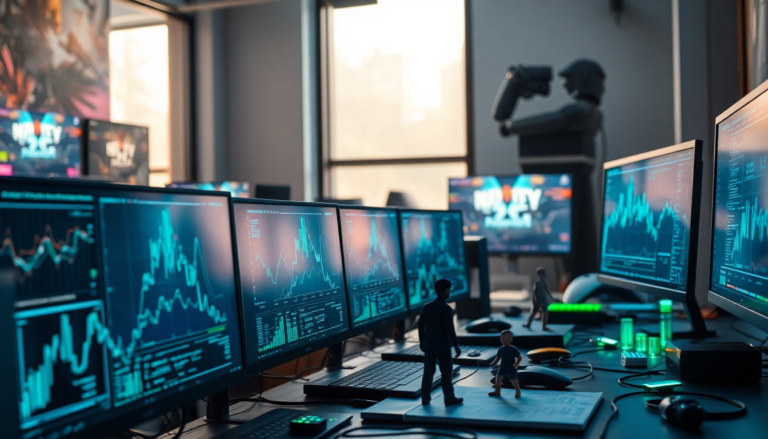Argomenti trattati
The gaming industry is in the midst of a significant transformation, with behavioral data emerging as a critical asset in the realm of artificial intelligence (AI). As the global gaming community surpasses 3.4 billion players, the data generated from their interactions provides an unparalleled resource for developing sophisticated AI systems. This article delves into how gaming telemetry is not only fueling advancements in AI but also reshaping various sectors including logistics, finance, and more.
The unique value of gaming telemetry
Unlike traditional media, where audience response can be vague, gaming telemetry captures a wealth of detailed data. Every action in a game—be it a strategic move in a role-playing game or a tactical decision in a shooter—is meticulously tracked. This data is timestamped and geo-located, providing insights into player behavior such as risk tolerance, resilience, and teamwork. Such high-frequency, structured data is a goldmine for training AI systems.
When fed into reinforcement learning models, this data allows AI agents to learn and adapt in real-time. For instance, a delivery drone could learn to avoid obstacles by analyzing gameplay logs, while smart-grid systems could predict power surges before outages occur. The implications for machine learning are profound, as AI can now leverage real-world data to solve complex problems with greater accuracy.
Global trends and regulatory developments
The gaming sector is not just a source of entertainment; it is a burgeoning market that generates over $177 billion annually. However, with great data comes great responsibility. Concerns surrounding surveillance and privacy have intensified, especially with advancements in technology like eye-tracking headsets and haptic feedback devices. In response, regulatory frameworks such as the European Union’s AI Act have emerged to establish clear guidelines for data collection and processing.
This legislation aims to balance innovation with ethical considerations, banning practices like emotion recognition in workplaces while allowing for lawful data use. The introduction of zero-knowledge proofs (ZKPs) may further enhance data privacy, ensuring that personal data can be shared without compromising individual rights. As the industry navigates these challenges, the clarity and transparency regarding data usage will be crucial in maintaining player trust.
The growing importance of behavioral data
As the gaming landscape evolves, so does the potential of behavioral data. Unlike cosmetic items that lose value over time, structured behavioral datasets become more valuable as they are reused. This unique characteristic makes gaming an attractive option for sectors seeking to model human behavior under stress. For example, insurers are now using behavioral data from games to assess risk profiles, while educational technology platforms analyze frustration levels in competitive gaming environments.
Moreover, companies like Animoca Brands are investing heavily in the intersection of AI and gaming, indicating a strong market confidence in these areas. In finance, hedge funds are tapping into game mechanics to analyze reward structures, revealing a trend where gameplay data is becoming a new form of asset.
Building trust through transparency
As the gaming industry embraces this new era of data utilization, transparency is becoming a competitive advantage. Developers are increasingly aware that players are concerned about how their data is being used. A recent survey revealed that 30% of developers view generative AI as harmful, up from 18% the previous year. This shift in perspective underscores the need for players to see how their in-game actions are contributing to broader AI models.
To foster trust, it is essential that players are provided with clear opt-out options and informed about the implications of their choices. For instance, players might need to understand that opting out could lead to longer match times or less balanced gameplay. Transparency in data usage, including operational guides and audit logs, should be clearly communicated within game updates to avoid misunderstandings.
The future of gaming data
The potential of gaming telemetry is vast and extends beyond entertainment. As studios focus on innovative ways to monetize gameplay behavior, they are also creating sovereign data vaults and utilizing smart contracts linked to synthetic assets. This infrastructure enables real-world applications to license gameplay behavior, paving the way for a new economy built on data.
In essence, the resource generated from gaming is live and abundant. With the legal frameworks beginning to solidify, the most valuable training fuel for AI is flowing from game servers every hour. This shift is not a mere trend; it represents a fundamental change in how data is perceived and utilized across various industries. As we stand at the onset of this data gold rush, the intersection of gaming and AI promises to redefine our understanding of technology’s role in society.
Final thoughts
In a world where data is often viewed with skepticism, the gaming industry has an opportunity to lead by example. By prioritizing transparency and ethical data use, the sector can build a foundation of trust with players. As we continue to explore the capabilities of gaming data, it’s clear that we are on the brink of a paradigm shift that could reshape the future of AI and technology. The question now is how effectively we can harness this potential to create a better, more equitable digital landscape.

